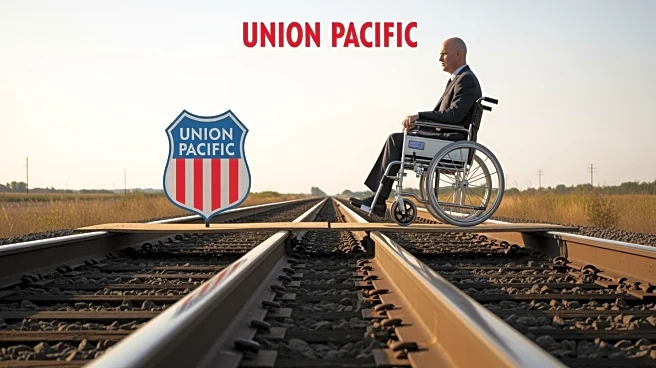What's Happening?
A recent ruling by the U.S. District Court for the District of Oregon has significant implications for employers facing lawsuits alleging both federal and state claims. The case involved Union Pacific
Railroad Co., which refused to allow a train conductor to return to work after a shoulder injury, despite medical clearance. The company's '1% rule' prohibited employees from working in safety-sensitive jobs if there was a 1% chance of sudden incapacitation. The employee sued for disability discrimination under the Americans with Disabilities Act (ADA) and Oregon's disability discrimination law, arguing that Union Pacific's policies had a disparate impact on disabled employees. A jury awarded the employee $952,863 in front and back pay, $1 million in noneconomic damages, and $25 million in punitive damages. Union Pacific challenged the award, but the court upheld the decision, affirming the punitive damages and rejecting the claim that the award exceeded the ADA statutory cap.
Why It's Important?
This case underscores the importance of individualized assessments in employment decisions, particularly concerning disability discrimination. The court's decision to uphold the punitive damages highlights the legal risks for companies that implement blanket policies without considering individual circumstances. The ruling serves as a cautionary tale for employers, emphasizing the need for compliance with antidiscrimination laws and the potential financial consequences of failing to do so. The significant punitive damages awarded reflect the court's stance on deterring unlawful conduct, which could influence future cases and employer policies nationwide.
What's Next?
The court has stayed execution of the judgment pending the exhaustion of the appellate process, indicating that Union Pacific may pursue further legal action. Employers are advised to review their policies and practices to ensure compliance with disability discrimination laws, potentially leading to changes in how companies assess employee fitness for work. The case may prompt broader discussions and policy reviews within industries that rely on safety-sensitive roles, as companies seek to mitigate legal risks and align with best practices.












